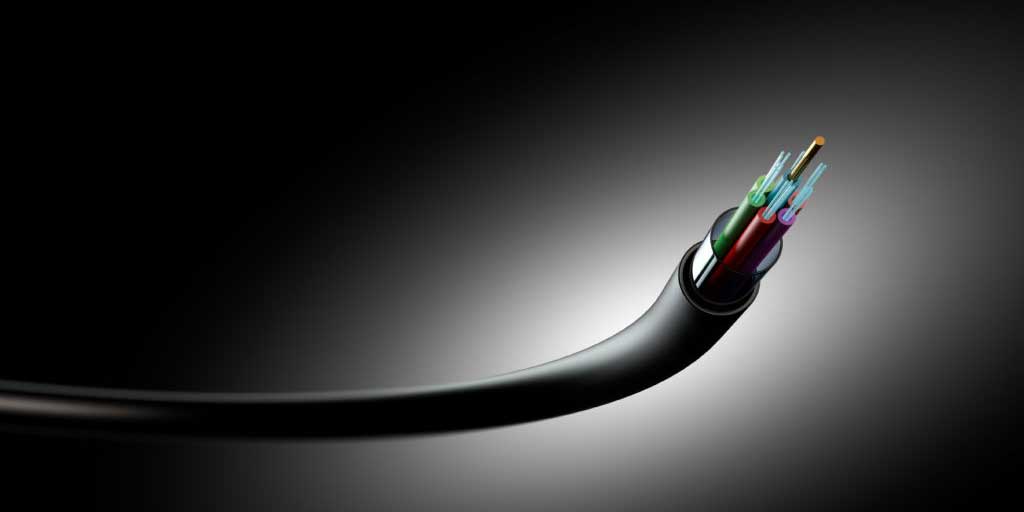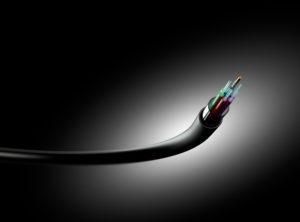
21 Jun Considering Leasing Dark Fiber? – Some Important Factors to Consider
Dark fiber is fiber that is not connected to transmission equipment and is not in use. When network operators deploy fiber optic infrastructure, they typically install excess fibers within a cable or excess cables within a duct. For example, an operator may install a 144 fiber cable and only light a couple of fiber pairs. They may also install multiple cables in a duct, but only use one. Some of the excess optical fibers or cable may then be leased to other operators, service providers, enterprises or institutions.
Some companies specialize in deploying dark fiber solely for leasing to other users. In Southern Africa, for example, governments require power companies to install optical ground wire (OPGW) cable on all new power lines. This ensures the availability of optical fiber for lease to operators and service providers who may not own fiber optic infrastructure.
Dark fiber demand is driven by businesses and institutions requiring high volumes of data flow in their applications. Otherwise most organizations would prefer to lease bandwidth in the form of T1/E1 lines, EVPN, Ethernet VPLS, wavelength services etc. For a one stop source of WAN bandwidth solutions visit GeoQuote.
Recent examples of dark fiber leasing include:
- A data center provider recently leased dark fiber for an interconnect to implement data center mirroring. The leaser transfers terabits of data from one data center to the other
- A Philippine emerging operator without its own fiber infrastructure recently leased dark fiber for its backbone network
- A hospital recently leased dark fiber to connect its campus to a data center. High volumes of traffic including surgery videos, images and other patient records have to be transferred daily to the data center for storage
- Mobile operators in several countries are negotiating deals with operators or fiber optic infrastructure providers to lease dark fiber for 5G mobile backhauling
In the next few paragraphs we look at important considerations, especially fiber optic attributes that should be considered when planning to lease dark fiber.
Fiber Optic Attributes
Since the deployment of the first generation of optical fibers in the 1980’s, optical fiber manufacturing has been changing rapidly to reduce impairments and meet the ever-increasing bandwidth demand. The data rate and distance achievable by the dark fiber leased is dependent on the attributes of the fiber. Network managers have to pay attention to the impact of fiber optic attributes on distance and data rates on the first day of lighting the dark fiber and also in future when requirements change. Before concluding any leasing agreement, network managers should request fiber optic specifications, latest cable test results and arrange for their own independent testing of the fiber infrastructure.
The most important fiber optic attributes in long-distance, high data rate systems include attenuation, chromatic dispersion (CD), polarization mode dispersion (PMD) and non-linear effects.
Attenuation:
Attenuation is the weakening of the signal as it propagates along the fiber due to light absorption, light scattering and other mechanisms. Single mode attenuation at 1550nm wavelength has evolved from as high as 0.4dB/km to as low as 0.17dB/km today – a very significant improvement. Installed dark fiber attenuation may lie anywhere in this range and the onus is on the network manager to ensure that they lease fiber with the best possible attenuation.
Chromatic dispersion:
Chromatic dispersion is the spreading of laser pulses as they travel along the fiber due to the different speeds of wavelength components in the laser pulses. Dispersion limits the distance the optical signals can travel before dispersion compensation is required. The higher the data rate, the more susceptible the system is to chromatic dispersion and the shorter the distance before compensation. The chromatic dispersion of the optical fiber should be known and calculation done to determine if and where compensation is required. For higher data rates using coherent systems, chromatic dispersion may not be an issue as it is compensated electronically in these new systems.
Polarization Mode Dispersion (PMD):
PMD is a fiber impairment caused by imperfections in the fiber geometry and will cause signal distortion. PMD is of concern for high data rate systems ≥ 10Gbps which can be mitigated by using optical fiber with lower PMD. Fiber installed before 10Gbps systems were developed were never specified for PMD and may have elevated PMD values. Again, the onus is on the network manager to ensure that the dark fiber is tested for compliance with International standards.
Nonlinear Impairments:
Nonlinear impairments in optical fiber are triggered by changes in the fiber refractive index with high power intensity in the fiber. There are many non-linear effects in fiber but in DWDM systems, Self-Phase Modulation (SPM), Cross-Phase Modulation (XPM) and Four-Wave Mixing (FWM) are the most important. In DWDM systems, high power in fiber (leading to high intensity) is inevitable as the power in each DWDM channel contribute to the overall power in the system. Moreover, if signals have to be amplified, high power is introduced in the fiber. Non-linear impairments generated in transmission fiber can be mitigated by using fiber with large effective area. It is incumbent on the network manager to know what the effective area of the fiber is and its potential impact to the fidelity of the signal.
Another important nonlinear effect is Amplified Spontaneous Emission (ASE) which is generated in Erbium Doped Fiber Amplifier (EDFA). It reduces the system Optical Signal to Noise Ratio (OSNR). Consequently, it reduces the number of amplifiers that can be connected in tandem before optical regeneration is required. In the case of long links (hundreds to thousands of kilometers) the network manager should work with the system vendor and select systems that can handle the required distance.
OTDR Testing of Dark Fiber
To ensure that there are no other issues with the dark fiber, a bidirectional OTDR test should be performed. The results should be used to confirm that there are no high splice losses, sharp bends in splice trays, incompatible fiber sections, breaks in the fiber, and other issues.
Optical Equipment Required for Dark Fiber:
For short links, less than 60km in 10Gbps per DWDM channel, all the equipment that may be required are transmission systems at the end of the link. But for longer distances, the network manager has to consider optical amplification and dispersion compensation. These sometimes come as an afterthought when companies consider leasing dark fiber. Amplifiers, electricity to power them and the amplifier huts needed to house them can contribute significantly to the cost of leased dark fiber network.
Dark Fiber Network Redundancy:
When you lease capacity from a network provider, they will most likely guarantee uptime. When an enterprise leases dark fiber, the onus is on the network manager to ensure that the network is properly designed and maintained to guarantee uptime. Redundancy is an important piece required to guarantee uptime.
In planning the setup of the dark fiber-based network, allow for an alternative path to reroute traffic in the event of a cable cut or any other event that disrupts the network. Alternatively, a circuit can be leased that will be on standby to transport at least the most critical of traffic when the main link fails.
System and Infrastructure Monitoring
Once the network is operational and is tested and commissioned, both the transmission system and optical infrastructure should be monitored for performance.
Optical Network Monitoring Systems (ONMS) are used to check the optical infrastructure for any signs of problems which can then be mitigated before network outage. ONMS typically consists of an OTDR and switches to switch the OTDR signal between multiple fibers. When combined with a mapping system, operation personnel can be alerted of a problem and its location so that the problem can be fixed in a timely manner.
System level monitoring is achieved through network monitoring cards which are part of the network management system. Details will be available from the system provider.
Training Opportunity
The lighting of dark fiber is treated in more detail in Optical Technology Training (OTT) training course Certified Optical Network Associate (CONA). The course is offered around the world through licensed trainers. In addition to covering many modules over a 5-day duration, trainees are required to pass a project assignment to light dark fiber with a DWDM or CWDM system.

Founder and Technical Director at FiberGuide, Lecturer, Scientist and Engineer. Passionate about optical networking and information and communication technologies. Connect with me on Linkedin – https://www.linkedin.com/in/jabulani-dhliwayo-1570b5b


Sorry, the comment form is closed at this time.